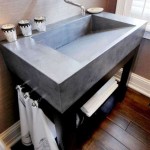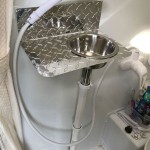Traditional Bathroom Sink Taps: A Timeless Elegance
Traditional bathroom sink taps represent a design aesthetic rooted in historical periods, often drawing inspiration from Victorian, Edwardian, and Art Deco styles. These taps are not merely functional plumbing fixtures; they are design elements that contribute significantly to the overall atmosphere and character of a bathroom. The appeal of traditional taps lies in their ability to evoke a sense of nostalgia, sophistication, and enduring quality, offering a counterpoint to the sleek, minimalist trends prevalent in modern design.
The selection of traditional bathroom sink taps requires careful consideration of several factors, including material, finish, style, and functionality. Understanding the nuances of these elements is crucial for achieving the desired aesthetic and ensuring long-term satisfaction. This article provides a comprehensive overview of traditional bathroom sink taps, exploring their key features, benefits, and considerations for selection and installation.
Material and Manufacturing
The materials used in the construction of traditional bathroom sink taps significantly impact their durability, appearance, and price point. Brass is a common and highly regarded material due to its resistance to corrosion, strength, and malleability. Brass taps are often plated with other metals to achieve different finishes, such as chrome, nickel, or gold.
Chrome plating provides a bright, reflective surface that is relatively easy to clean and maintain. It is a popular choice for bathrooms seeking a classic look. Nickel plating offers a warmer, softer sheen compared to chrome. It can be either polished for a high-gloss finish or brushed for a more subtle, satin appearance. Gold plating imparts a luxurious and opulent feel. It is typically used in high-end bathrooms to create a statement of elegance.
Other materials sometimes employed in traditional tap construction include stainless steel and copper. Stainless steel is known for its durability and resistance to rust, making it a practical choice for bathrooms. Copper possesses natural antimicrobial properties and develops a unique patina over time, adding character to the taps. The manufacturing process often involves casting, machining, and polishing to achieve the intricate details and refined finish characteristic of traditional designs. The precision and quality of these processes directly influence the longevity and aesthetic appeal of the taps.
Beyond the main body material, the internal components also play a vital role. Ceramic disc cartridges are frequently used for their smooth operation and resistance to wear and tear, offering a drip-free performance and extending the lifespan of the tap. These cartridges replace the traditional rubber washers, known for their tendency to degrade over time and cause leaks.
Styles and Design Features
Traditional bathroom sink taps encompass a wide array of styles, each with its distinct characteristics. Crosshead taps, characterized by their four-pronged handles, are a quintessential element of traditional bathroom design. They offer a tactile and visual connection to the past, providing a solid and substantial feel. Lever taps, featuring single or double levers, provide a more contemporary interpretation of traditional style. Their ergonomic design makes them easy to operate, particularly for individuals with limited dexterity.
Pillar taps, consisting of separate hot and cold water taps mounted on the sink or countertop, are another common style. They offer flexibility in terms of placement and can be integrated into a variety of bathroom layouts. Mixer taps, which combine hot and cold water into a single spout, provide convenience and temperature control. They are available in a range of traditional designs, from simple curved spouts to more elaborate swan-neck styles.
Finishes play a crucial role in defining the style of traditional taps. Polished chrome evokes a sense of timeless elegance, while brushed nickel offers a more subdued and sophisticated look. Gold and bronze finishes add a touch of luxury and warmth. The design details, such as decorative flanges, ceramic indices, and intricate engravings, further enhance the aesthetic appeal of traditional taps.
Consideration should be given to the overall architectural style of the bathroom. Victorian-inspired bathrooms might benefit from crosshead taps with porcelain indices and ornate detailing, while Art Deco-themed bathrooms could incorporate lever taps with geometric shapes and polished chrome finishes. The selection of taps should complement the other fixtures and accessories in the bathroom, creating a cohesive and harmonious design.
Spout design is another important aspect to consider. High-arc spouts provide ample clearance for washing hands and filling containers, while low-arc spouts offer a more streamlined and understated look. Swivel spouts add functionality by allowing the user to direct the water flow as needed. The shape and style of the spout should complement the overall design of the tap and the sink.
Functionality and Considerations for Installation
While aesthetics are paramount, the functionality of traditional bathroom sink taps is equally important. Factors such as water pressure, flow rate, and temperature control should be considered to ensure a comfortable and efficient user experience. Low-flow taps can help conserve water without compromising performance. These taps incorporate aerators that mix air with water, creating a steady and satisfying flow while reducing water consumption.
Before purchasing traditional taps, it is essential to verify compatibility with the existing plumbing system. The number of tap holes in the sink or countertop will determine the type of tap that can be installed. Single-hole taps require a single opening, while two-hole taps require separate holes for the hot and cold water supplies. Three-hole taps typically consist of separate hot and cold water taps and a spout.
Installation can be a straightforward process for those with basic plumbing skills. However, it is advisable to consult a professional plumber for complex installations or if there are any concerns about the existing plumbing system. Proper installation is crucial to prevent leaks and ensure the longevity of the taps. The plumber can also advise on any necessary modifications to the plumbing system to accommodate the new taps.
Regular maintenance is essential to keep traditional taps in optimal condition. Cleaning with a soft cloth and mild detergent is typically sufficient to remove dirt and grime. Abrasive cleaners should be avoided, as they can damage the finish. Periodically checking for leaks and replacing worn-out parts can help prevent more serious problems in the future.
The water pressure in the home can affect the performance of traditional taps. Low water pressure may result in a weak flow, while high water pressure can cause splattering. Installing a pressure regulator can help maintain a consistent and comfortable water flow. The water quality can also impact the longevity of the taps. Hard water can cause mineral deposits to build up inside the taps, reducing their efficiency and potentially causing damage. Installing a water softener can help prevent this problem.
When selecting traditional bathroom sink taps, it is important to consider the long-term value and durability of the product. Investing in high-quality taps from reputable manufacturers can ensure years of reliable performance and enhance the overall aesthetic of the bathroom. Carefully consider the material, finish, style, and functionality of the taps to make an informed decision that aligns with the homeowner's preferences and budget.
Furthermore, adherence to relevant plumbing codes and regulations is crucial. These codes ensure that the installation is safe and compliant with industry standards. Consult with a qualified plumber to determine the specific requirements for the local area. Failure to comply with these codes can result in fines and other penalties.
Finally, consider the accessibility needs of all users when selecting traditional taps. Lever taps may be easier to operate for individuals with limited dexterity compared to crosshead taps. Ensure that the taps are placed at a comfortable height and within easy reach. Universal design principles can be incorporated to create a bathroom that is accessible and functional for everyone.

Churchill Traditional Basin Mixer Tap Chrome Bathroom Republic

Victoria Traditional Basin Taps Buy Item At Victorian Plumbing Co

Ss Traditional Basin Taps Buy At Bathroom City

Axbridge Traditional Basin Tap Mono Cross Buy At Bathroom City

Nuie Viscount Bathroom Basin Taps Traditional Crosshead Indulgent Bathing

Windsor Traditional Chrome Deck Mounted Mono Basin Tap Tbt14c Bathroom House

Diffe Types Of Bathroom Taps To Give Your A New Look And Style

Roca Carmen Smooth Basin Mixer Tap Without Waste 5a3b4bc00

Stafford Victorian Bath Basin Taps Set

Classic Traditional Basin Mixer Tap Livinghouse







